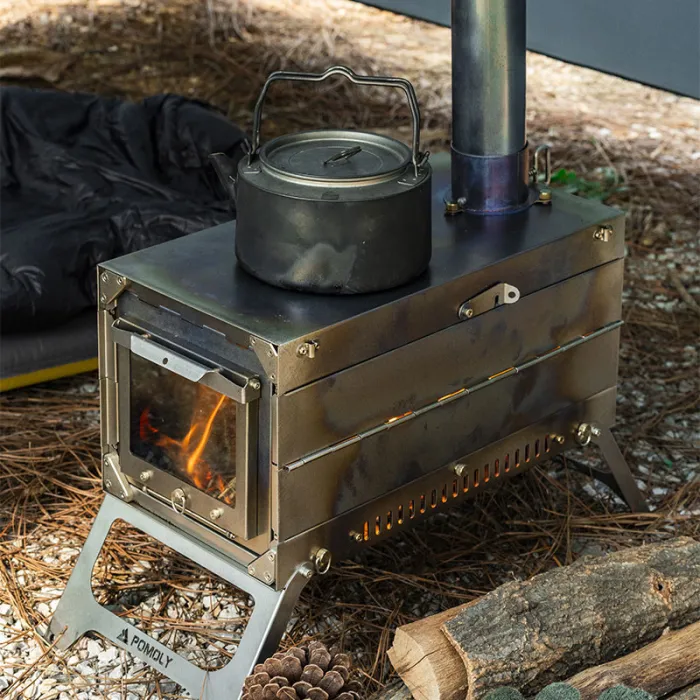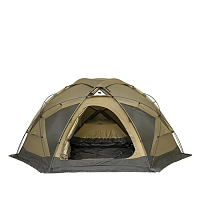Cart
Loadding...
Best Sauna Temperature Generation: Wood Stove or Infrared?
Mar 17, 2024

Introduction
When it comes to creating a soothing and rejuvenating sauna experience, the method of temperature generation plays a significant role. Traditional wood stoves and modern infrared technology are two popular options for heating saunas. In this comprehensive review, we will explore the pros and cons of both methods to help you determine the best sauna temperature generation option for your needs. By understanding the characteristics and benefits of wood stoves and infrared systems, you can make an informed decision and enhance your sauna experience.
1. Wood Stove: Authenticity and Atmosphere
Using a wood stove in a sauna provides an authentic and traditional sauna experience. The crackling sound of burning wood and the natural scent create a unique ambiance that many sauna enthusiasts appreciate. Wood stoves generate heat through the combustion of firewood, which creates a radiant heat source that warms the sauna room. This method allows for a gradual increase in temperature and a gentle heat that penetrates the body, promoting relaxation and detoxification.
2. Wood Stove: High Heat Capacity
Wood stoves are known for their high heat capacity, which means they can reach and maintain higher temperatures compared to infrared systems. This is particularly beneficial for sauna enthusiasts who prefer intense heat and steam. The ability to achieve higher temperatures can enhance the sweating process, resulting in a deeper detoxification and increased circulation. Wood stoves are well-suited for those who enjoy hotter saunas and are looking for a more intense sauna experience.
3. Wood Stove: Wood Sourcing and Maintenance
One of the considerations when using a wood stove in a sauna is the sourcing and availability of firewood. It is important to use dry and well-seasoned firewood to ensure efficient combustion and minimize smoke production. Additionally, regular maintenance of the wood stove, including cleaning the flue and ash removal, is essential for safe and optimal performance. Those who appreciate the ritual of preparing and maintaining a wood stove will find this aspect of sauna temperature generation rewarding.
4. Infrared: Convenience and Efficiency
Infrared saunas use infrared panels or heaters to generate heat. These panels emit infrared radiation, which directly heats the body without significantly warming the surrounding air. Unlike wood stoves, infrared systems require minimal preheating time, allowing you to start your sauna session quickly. The convenience and efficiency of infrared saunas make them suitable for those with busy schedules or limited time for sauna preparation.
5. Infrared: Customizable Heat and Lower Temperatures
Infrared saunas offer the advantage of customizable heat settings. Most infrared systems allow you to adjust the temperature and intensity of the infrared panels, providing a personalized sauna experience. Infrared heat is often described as a gentle and penetrating warmth that warms the body without feeling overly hot. This allows sauna enthusiasts to enjoy a sauna experience at lower temperatures compared to wood stoves while still reaping the benefits of relaxation and detoxification.
6. Infrared: Energy Efficiency and Low Maintenance
Infrared saunas are known for their energy efficiency. They require less power to operate compared to wood stoves, making them a more sustainable option in terms of energy consumption. Additionally, infrared systems generally have a longer lifespan and require minimal maintenance. The absence of firewood and the associated cleaning and maintenance tasks make infrared saunas a convenient choice for those seeking a hassle-free sauna experience.
Conclusion
Choosing between a wood stove and an infrared system for sauna temperature generation depends on your preferences and priorities. Wood stoves offer an authentic sauna experience, high heat capacity, and a unique ambiance. However, they require sourcing firewood and regular maintenance. Infrared saunas provide convenience, customizable heat, energy efficiency, and low maintenance. They are ideal for those who prioritize ease of use and a gentle, penetrating warmth.
Consider your desired sauna experience, available resources, and personal preferences when deciding between wood stoves and infrared systems. Both options offer their own set of benefits and can contribute to a relaxing and rejuvenating sauna experience. Whichever method you choose, regular sauna sessions can promote overall well-being and provide a tranquil escape from the stresses of daily life.
- Contact Us
-

About Pomoly
Pomoly is a leading camping brand specializing in hot tents and tent stoves. We are camping life explorer, Follow Page / Join Group, let's make camping enjoyful together!
Working Hours
Mon-Fri, 09:00 - 17:00

- Company Info
- NEWS
- About us
- Pomoly Name
- Leave-No-Trace
- Contact Now
- Facebook Group
- YouTube Learning
- Contact Us
- Topic Collections
- Policies & Terms
- Payment Policy
- Shipping Policy
- Return & Refund
- Privacy Policy
- Terms of Use
- Tax Policy
- Website Disclaimer
- Safety Disclaimer
- Warranty Policy
- Promotion Policy
- Pre-order Policy
- INTELLECTUAL PROPERTY RIGHTS
- Dealers Agreement And Terms
- Become Affiliate
- User Center
- Forget Password
- My Orders
- Tracking Order
- My Account
- Register
- Popular Searches
-
Tipi Tents Dome Tents Camping Tent Hammock Stove Camping Camping Pellet Stove Circle 6 Titanium Water TankDome X Locomotive 20 LEO 2 camping tent T-Brick 2.0 T1 2.0 tent stove Dweller wood stove Oroqen 2.0 Chimney Water Tank Lumberjack STOVEHUT Bromance 70 Tipi Pomoly Coupon Baker Oven Stove Titanium elbow Fire Pits Tent Stove titanium Stove Outdoor Pellet Stove
keebon pellet stove






